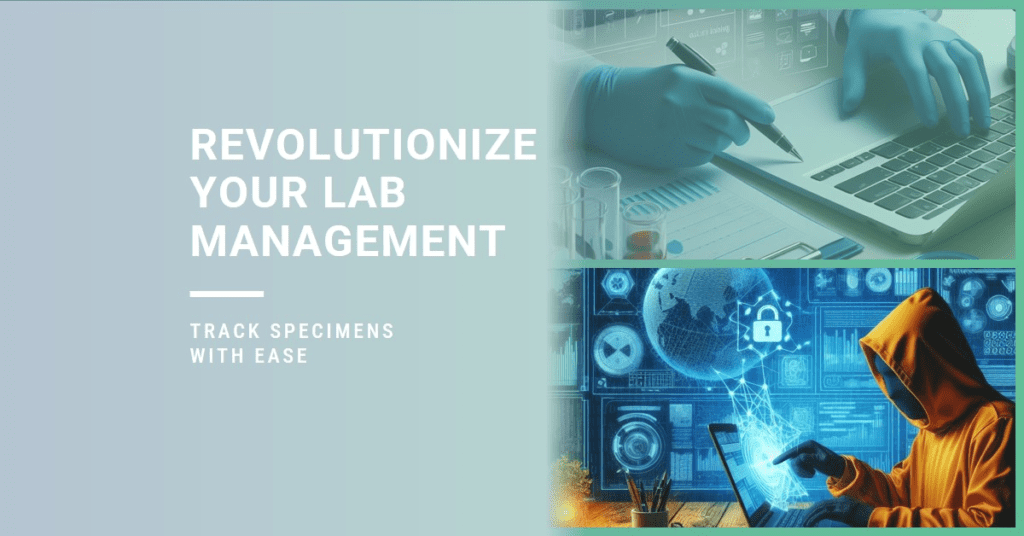Specimen tracking is like following a package as it travels from one place to another. When a healthcare worker collects a sample, like blood or urine, they attach a unique code to it, similar to a tracking number on a package. This label helps keep track of the sample as it moves through different steps in the testing process, from collection to analysis in the lab.
With specimen tracking, healthcare workers can easily see where each sample is at any given time, ensuring that it’s handled correctly and tested promptly. This helps healthcare facilities provide patients with faster and more accurate diagnoses and treatments, ultimately leading to better care and outcomes.
Laboratory management software, usually called LIS, LIMS or LMS, takes this process to a new level by leveraging technology to automate and streamline processes, improve accuracy, and enhance visibility and control over specimens within healthcare facilities.
This article discusses how LMS can transform healthcare, allowing healthcare workers to do their jobs confidently and precisely.
Centralized Specimen Management
LMS allows you to have a centralized system where staff keep track of all the specimens in one place. This helps healthcare workers know where each specimen is from when it’s collected until it’s tested in the lab.
There’s no need to worry about getting mixed up or lost because everything is monitored closely, ensuring specimens are handled accurately and reliably throughout the process.
Real-Time Visibility and Tracking
LMS lets healthcare workers see where each specimen is and how it’s doing right. The real-time tracking feature means staff can work faster and make decisions quickly to help treat their patients. LMS’s information is critical for prioritizing work, especially for time-sensitive tests.
Advanced Tracking Features
One cool feature of LMS is barcode labeling. Each specimen gets a special barcode sticker that acts like a unique ID card. This makes it easy for healthcare workers to quickly and accurately identify each specimen without any mix-ups.
Another feature is scanning, which uses special machines to scan the barcode stickers on specimens. This allows healthcare workers to see real-time updates on each specimen’s status, such as where it is and what’s happening.
With barcode labeling and scanning, tracking specimens becomes a breeze. Healthcare workers can scan specimens and find out important information without any guesswork.
Healthcare Systems Integration
Specimen management software works best when integrated with other important systems, like electronic health records (EHR) and laboratory information systems (LIS). Healthcare workers don’t have to waste time typing in the same information over and over again because everything can be shared automatically. This eliminates the need for manual data entry, which can be slow and prone to mistakes. More time means they can focus on the patients, giving them the best care possible.
Reporting and Analytics
LMS can generate reports that give healthcare facilities important insights into how well the system tracks their specimens. These reports can provide details like the number of specimens being collected, how long it takes to process them, and if there are any hiccups along the way. This lets healthcare workers see what’s working well and where there might be room for improvement.
Compliance and Regulatory Requirements
LMS plays a big role in helping healthcare institutions adhere to compliance and regulatory bodies like the Health Insurance Portability and Accountability Act (HIPAA) and Clinical Laboratory Improvement Amendments (CLIA). It ensures that only authorized people can access patients’ sensitive information, protecting their privacy.
In addition, LMS helps healthcare institutions keep records of all the specimens they handle, stay on track with best practices, ensuring everything is done according to regulations.
Closing Thoughts
Laboratory management software (LMS) is a big step in improving specimen tracking in healthcare settings. It can streamline several tasks, from centralizing specimen information to advanced real-time tracking, from ensuring compliance with regulatory requirements to providing robust reporting and analytics.
With LMS, healthcare workers can easily and precisely navigate the complexities of specimen tracking. LMS will become an indispensable feature in meeting the demands for high-quality, patient-centric care.
